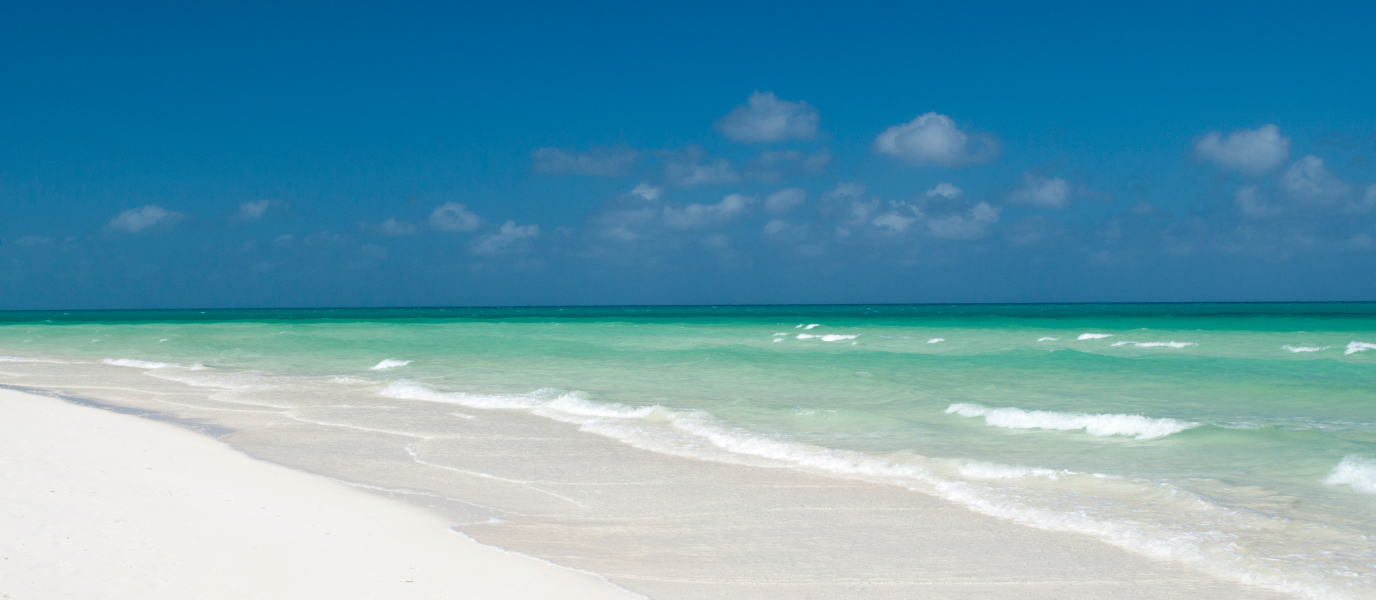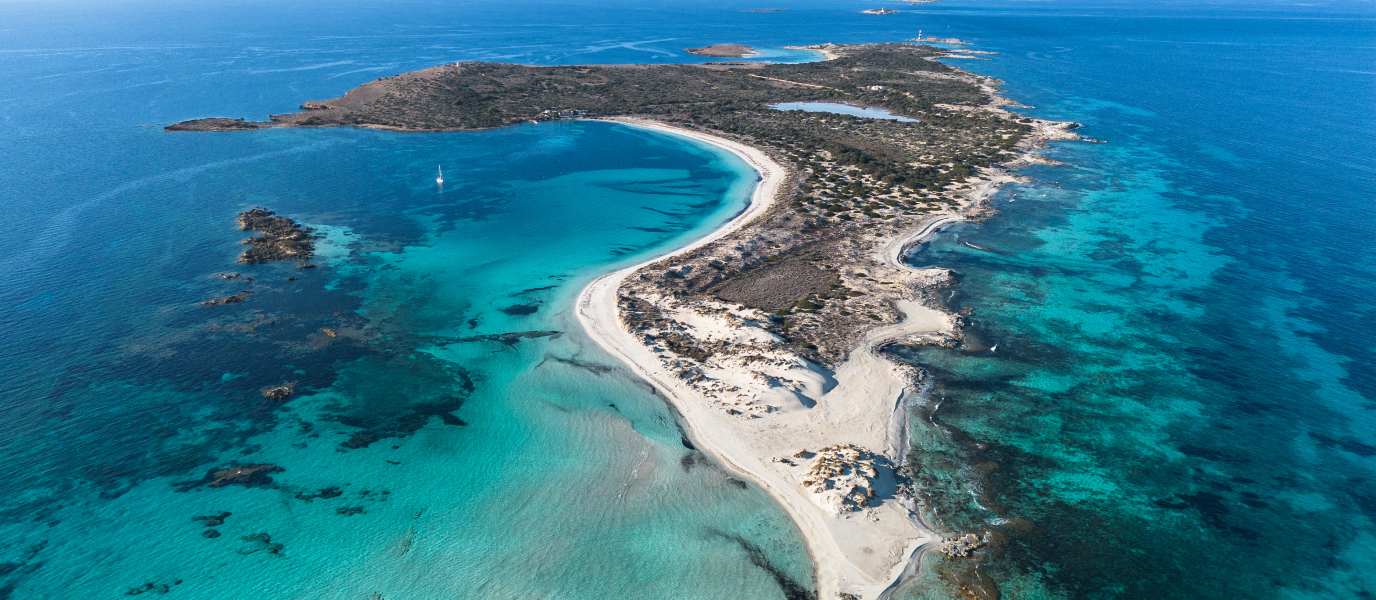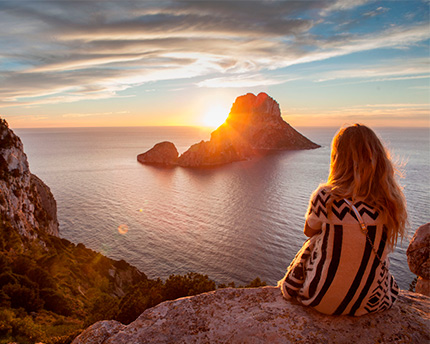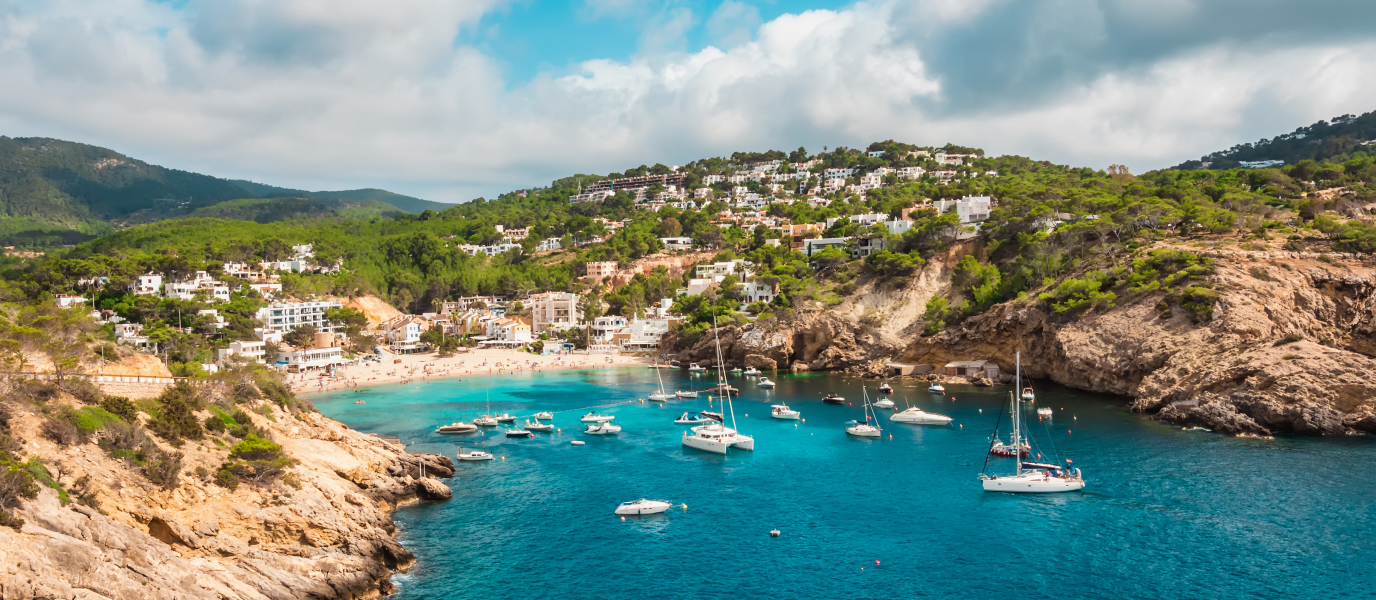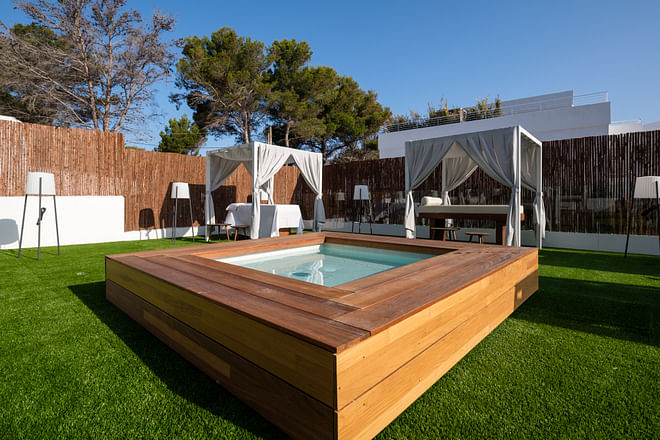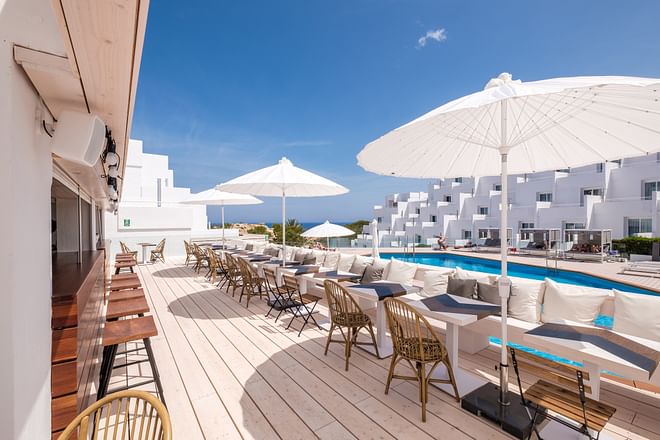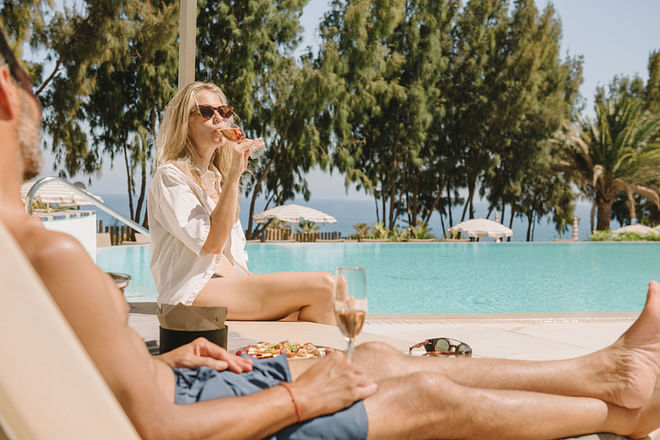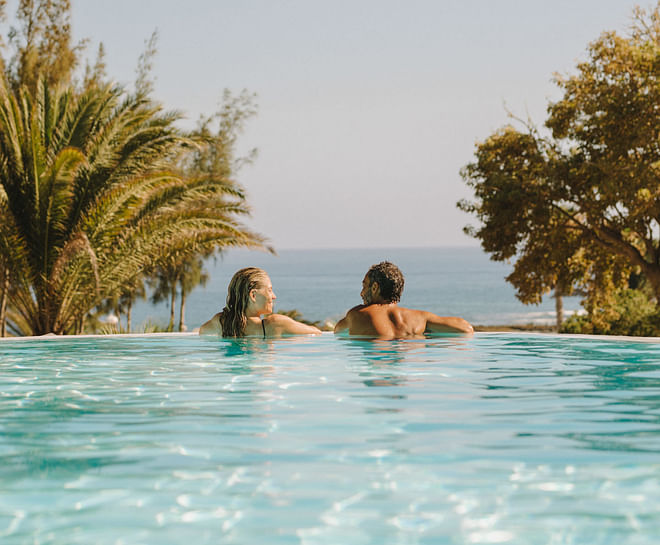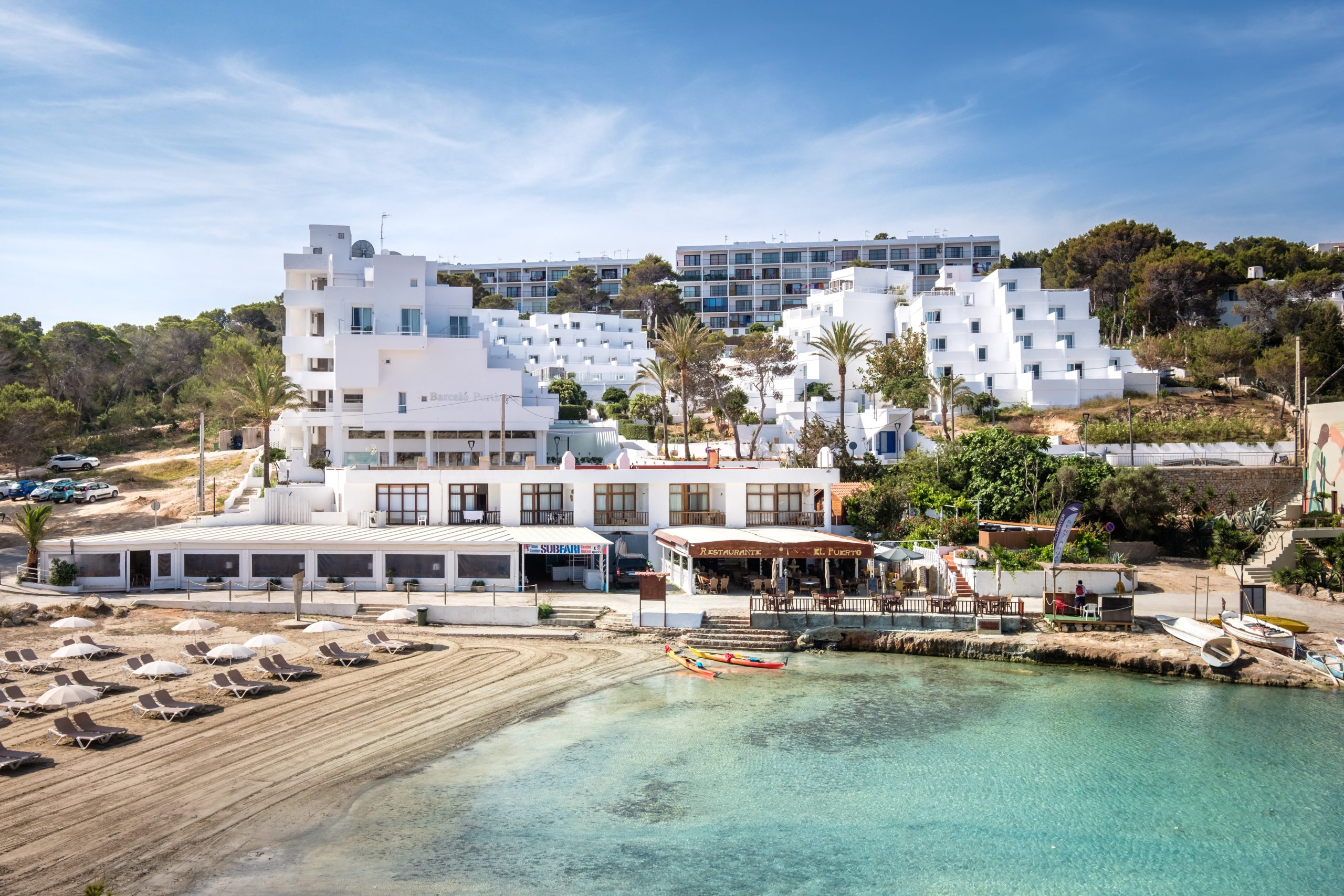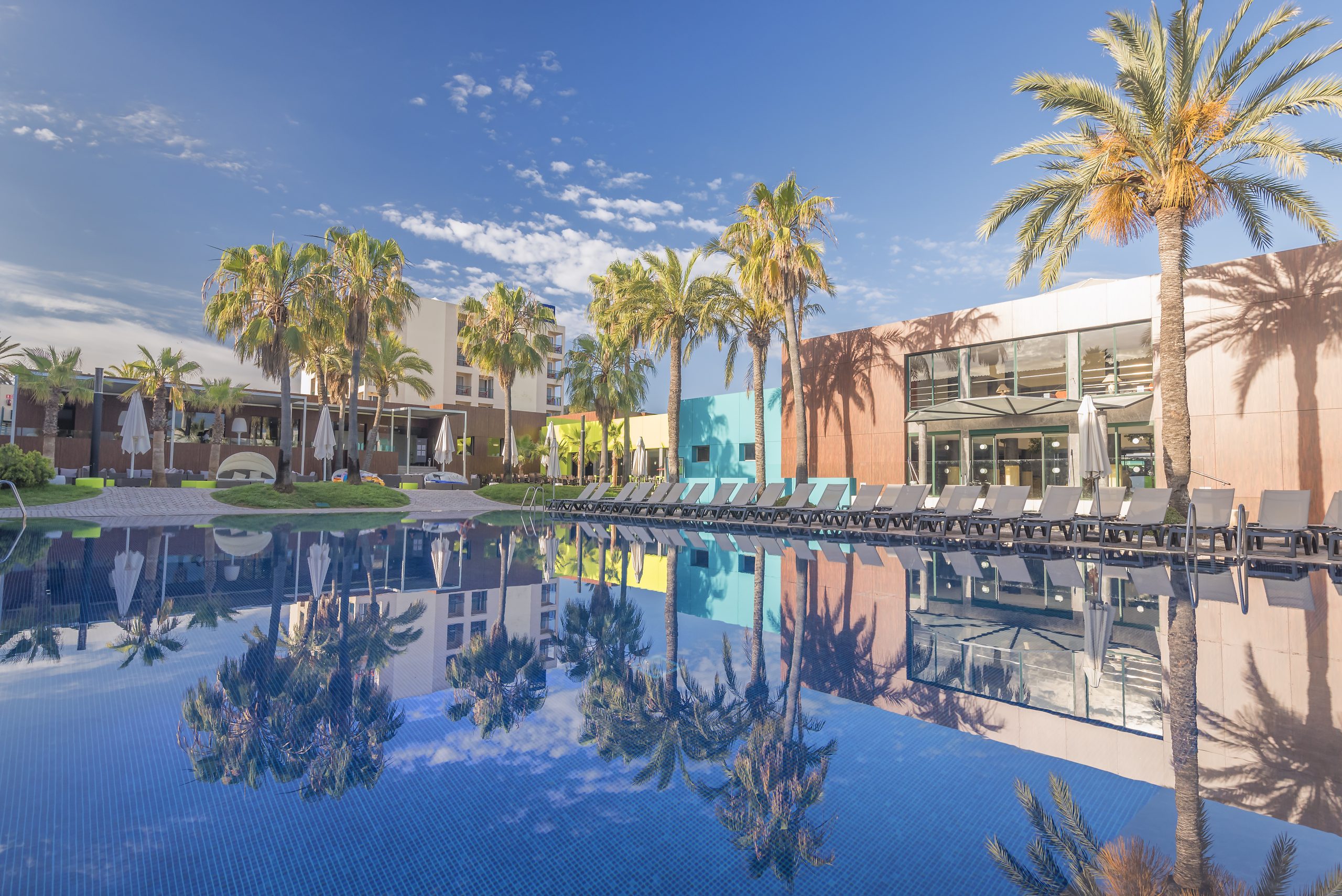The Ibiza Salt Flats (or Ses Salines) are one of the most valuable natural spaces in Ibiza. A protected environment in the form of a natural park, which includes a land part and a much larger sea part.
Both are home to hundreds of species, among which posidonia, a type of aquatic plant, is its most important asset, due to it acting as a regenerator of the seabed.
Moreover, this area continues to be a rather important economic hub, as the salt flats that have survived the passage of time continue to produce salt, which is one of Ibiza’s most prized natural products.
And we mustn’t lose sight of the fact that this area of Ibiza’s coastline is home to two of the most spectacular beaches on the island. And all this just a stone’s throw from the island’s capital.
- The Ibiza Salt Flats (or Ses Salines)
- Salt from Ibiza
- Platja de Ses Salines or Salinas beach
- Es Cavallet, the nudist and gay beach
- The Treasures of the Ses Salines Natural Park
- Es Codolar, a peaceful sanctuary
The Ibiza Salt Flats (or Ses Salines)
The salt flats of Ibiza, as such, are an infrastructure that was created in Phoenician times. In other words, construction began around 800 BC. With the occasional period of inactivity, salt has been produced here ever since.
The product, which for centuries was an unrivalled source of wealth for Ibiza, became less significant with the emergence of the first refrigeration and freezing equipment. This also led to the partial abandonment of part of the area of the salt flats.
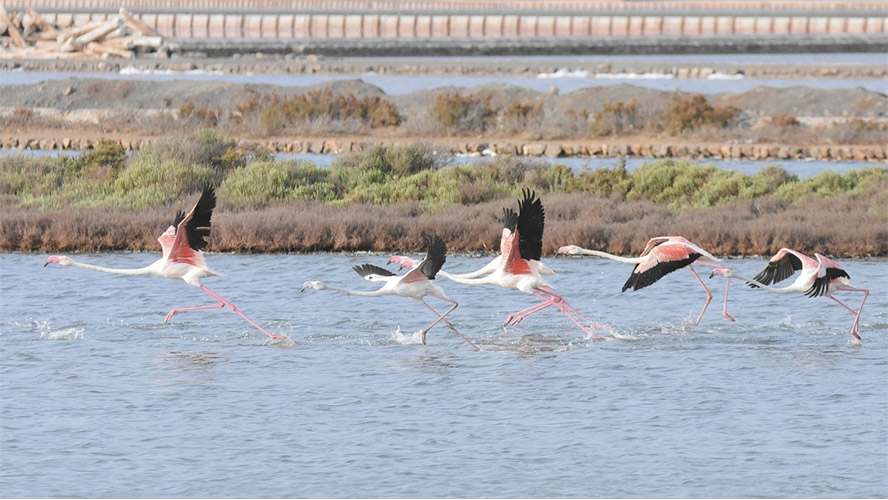
The marshes in which the salt was drying out became a very important natural space (saltwater lagoons), due to the sheer amount of nutrients, for several plant and animal species. Mainly, for all those birds that use them as a resting place during their annual migrations between Northern Europe and Africa, and vice versa.
Salt from Ibiza
Salt is still harvested today in the salt flats of Ibiza, although in much smaller quantities than in the past. The company Sal de Ibiza is in charge of them, and has a production process without additives or any kind of chemical process. In other words, 100% natural sea salt is produced here, which is one of the most highly-valued products on the Balearic Islands.
Without a doubt, this is one of the best souvenirs to take home with you on a visit to Ibiza, whether in salt mills, in beautiful fleur de sel containers, in the form of granite (flavoured with herbs and other spices), or in fleur de sel chocolates, as well as all kinds of snacks.
Platja de Ses Salines or Salinas beach
The Ses Salines beach (or Las Salinas beach) is, without exaggeration, one of the most spectacular beaches in the Mediterranean. It’s a narrow strip of sand 1.5 kilometres long and 25-30 metres wide, flanked by a belt of coastal vegetation, where junipers and pines play a leading role.
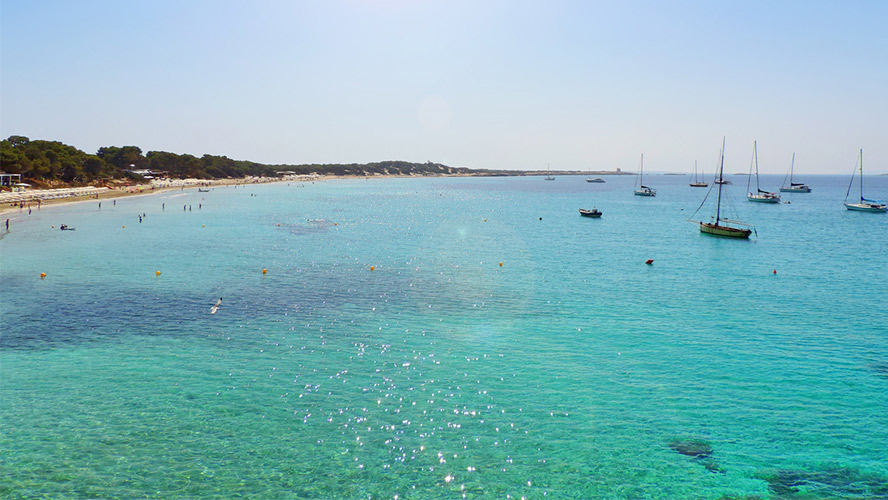
Perhaps that’s why it’s also one of the busiest beaches in Ibiza during the summer. This is thanks in part to the three beach bars located next to it that always have music blaring, with sun loungers and a full range of food, cocktails, and all kinds of drinks.
During this time of year, it’s common for yachts and sailing boats to moor in front of this beach, occupied by the many celebrities who frequent the island.
Es Cavallet, the nudist and gay beach
Next to Ses Salines beach is Es Cavallet, which is undoubtedly one of the best nudist beaches in the Balearics. It has also long been considered one of the gay meccas of the Mediterranean, thanks above all to the normalisation work of Chiringay. That is to say, the beach bar.
In total, this stretch of fine sandy coastline is just over a kilometre long, with a width of between 30 and 40 metres. One of its disadvantages is that the winds blowing in from the sea carry the remains of the posidonia meadows, which often cover a large part of the sandy surface.
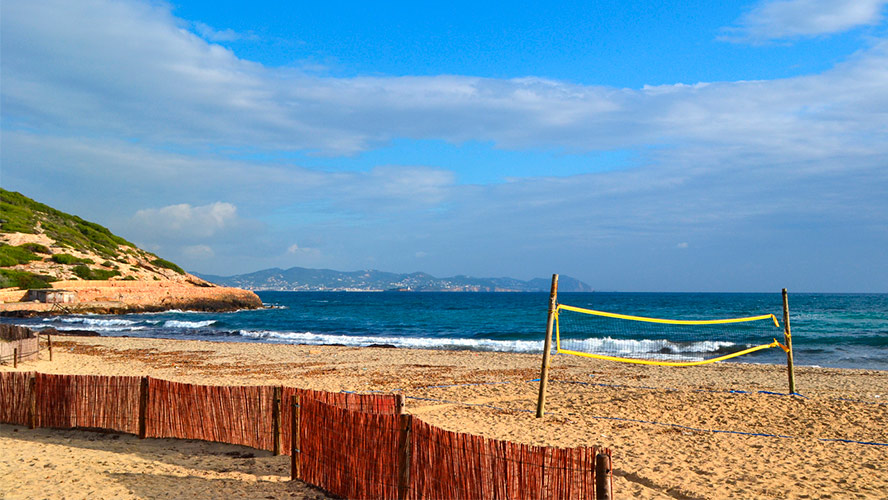
The Treasures of the Ses Salines Natural Park
The Las Salinas Natural Park in Ibiza and Formentera is one of the best examples of the diversity of Mediterranean ecosystems. In total, together with the reserve area, it occupies a protected space of almost 17,000 hectares, some 14,000 of which are sea areas.
In other words, it covers both the part of the salt flats in Ibiza and those of Formentera and the part of the sea that separates both islands (the Pityuses). It’s an essential area for resting and nesting for all kinds of birds. These include flamingos, common stilts, Audouin’s gulls and Balearic shearwaters.
Also, as we’ve already mentioned, it’s an invaluable refuge for posidonia, a plant that grows in the form of underwater meadows and which scientists consider to be the biggest living organism on the planet.
On land, the Las Salinas Natural Park is home to other unique animal species such as the podarcis pityusensis lizard (which is endemic to Ibiza and Formentera), the dormouse,
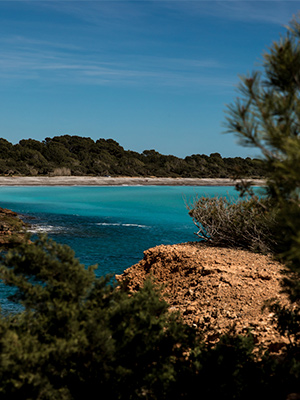
and several species of native beetles and snails.
Es Codolar, a peaceful sanctuary
It’s ironic that the longest beach in the Las Salinas area of Ibiza is so rarely frequented by swimmers. There’s an explanation for this. Its slightly more than three kilometres in length are covered by boulders (codols in Catalan), which make accessing the sea very difficult.
However, once you have overcome this obstacle (with the help of the right footwear), the only thing left to do is to immerse yourself in some of the cleanest and clearest waters on the whole island and enjoy the Mediterranean in all its beauty.
From this beach you can also enjoy one of the best panoramic views of the artificial lagoons that make up the Ibiza Salt Flats. And it’s one of the most popular spots for plane spotting enthusiasts, as this beach is located next to the island’s airport runway.
























































